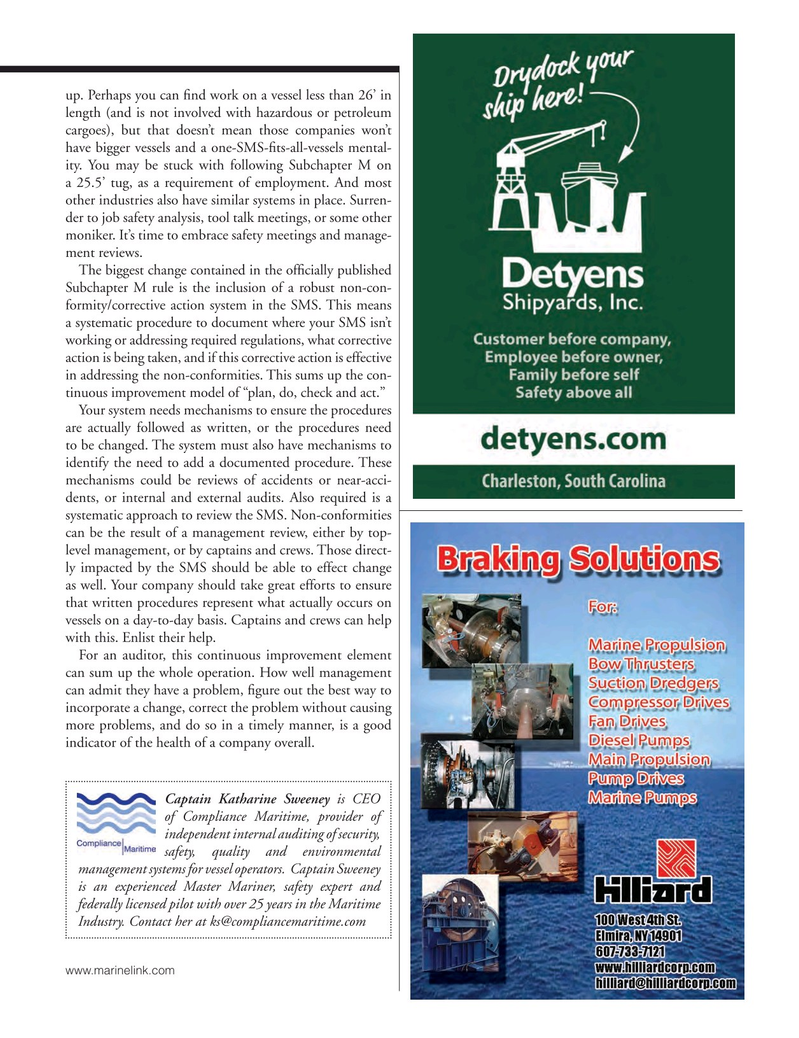
Page 29: of Marine News Magazine (September 2016)
Offshore Annual
Read this page in Pdf, Flash or Html5 edition of September 2016 Marine News Magazine
up. Perhaps you can ? nd work on a vessel less than 26’ in length (and is not involved with hazardous or petroleum cargoes), but that doesn’t mean those companies won’t have bigger vessels and a one-SMS-? ts-all-vessels mental- ity. You may be stuck with following Subchapter M on a 25.5’ tug, as a requirement of employment. And most other industries also have similar systems in place. Surren- der to job safety analysis, tool talk meetings, or some other moniker. It’s time to embrace safety meetings and manage- ment reviews.
The biggest change contained in the of? cially published
Subchapter M rule is the inclusion of a robust non-con- formity/corrective action system in the SMS. This means a systematic procedure to document where your SMS isn’t working or addressing required regulations, what corrective action is being taken, and if this corrective action is effective in addressing the non-conformities. This sums up the con- tinuous improvement model of “plan, do, check and act.”
Your system needs mechanisms to ensure the procedures are actually followed as written, or the procedures need to be changed. The system must also have mechanisms to identify the need to add a documented procedure. These mechanisms could be reviews of accidents or near-acci- dents, or internal and external audits. Also required is a systematic approach to review the SMS. Non-conformities can be the result of a management review, either by top- level management, or by captains and crews. Those direct- ly impacted by the SMS should be able to effect change as well. Your company should take great efforts to ensure that written procedures represent what actually occurs on vessels on a day-to-day basis. Captains and crews can help with this. Enlist their help.
For an auditor, this continuous improvement element can sum up the whole operation. How well management can admit they have a problem, ? gure out the best way to incorporate a change, correct the problem without causing more problems, and do so in a timely manner, is a good indicator of the health of a company overall.
Captain Katharine Sweeney is CEO of Compliance Maritime, provider of independent internal auditing of security, safety, quality and environmental management systems for vessel operators. Captain Sweeney is an experienced Master Mariner, safety expert and federally licensed pilot with over 25 years in the Maritime
Industry. Contact her at [email protected] www.marinelink.com
MN Sept16 Layout 18-31.indd 29 8/22/2016 10:08:23 AM

 28
28

 30
30
